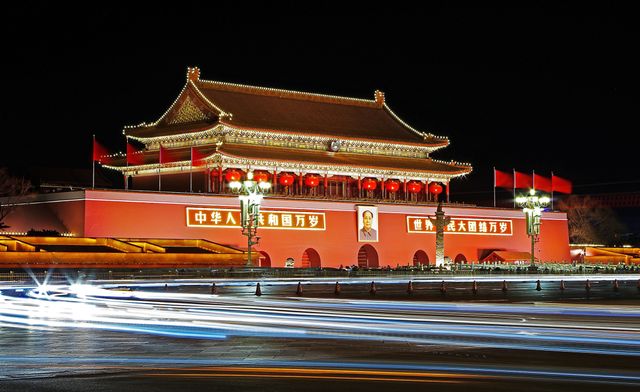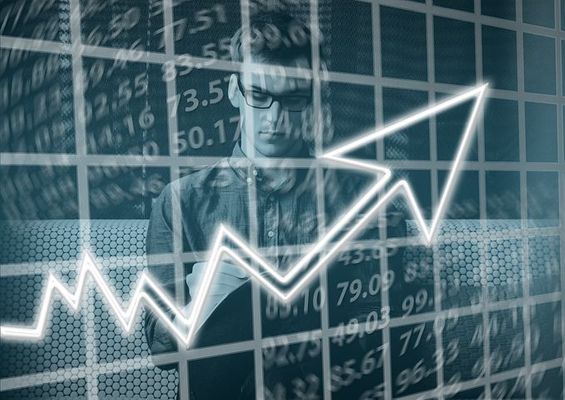4.1.1
Growing Economies
Growing economies
Growing economies
As countries have become more closely linked through the processes of globalisation, there has been a convergence in economic growth.


UK economic growth
UK economic growth
- The UK's economic growth plummeted during the recession of 2007-2008.
- The UK's GDP growth from 2008 to 2009 was -4.2%.
- The economy has been sluggish since then:
- GDP growth in 2015 was 2.3%, in 2016 growth was 1.8%, in 2017 growth was 1.8% and in 2018 growth was 1.4%


Emerging economies
Emerging economies
- There is no clearcut definition of what an emerging economy is.
- However, some general characteristics could be:
- An economy which is volatile, to a degree.
- An economy which is more immature and is transitioning into a developed economy.
- The high growth of emerging economies is driven by China and India.
- China's growth rate was 10.26% in 2010, 6.9% in 2015, 6.7% in 2016 and 6.9% in 2017.
- India's growth rate was 10.26% in 2010, 8.15% in 2015, 7.11% in 2016 and 6.62% in 2017.


Economic growth in China and India
Economic growth in China and India
- China has experienced significant economic growth since its economy transitioned to a free market.
- China has specialised in the secondary sector (manufactured goods) and its economic growth is export-led.
- India's economic growth has gone hand in hand with its young demographic.
- India's tertiary sector (services) is one of the fastest in the world.


Implications of economic growth
Implications of economic growth
- Economic growth benefits individuals as employment opportunities increase.
- The unemployment rate typically falls in a period of economic growth. This leads to higher standards of living and can help lower levels of income inequality.
- Globalisation and the rise of emerging economies help businesses because they can access new markets via trade.
Indicators of Economic Growth
Indicators of Economic Growth
Several indicators can be used to measure growth. The traditional measure is GDP (gross domestic product).


GDP
GDP
- Economic growth can be measured by a rise in real GDP.
- If real GDP is growing, this means the value of goods and services being produced is rising.
- So it should mean, ceteris paribus (everything else equal), that incomes and standards of living are rising.


GDP per capita
GDP per capita
- Goods and services need to be distributed among the people, so population size matters.
- A better measure of economic strength is real GDP per capita (per capita means divided by the population).
- E.g. China’s real GDP is X, but its GDP per capita is Y because it has so many people. Whereas Qatar’s real GDP is X but its GDP per capita is higher. So the “average” person has a higher income in Qatar than in China.


HDI
HDI
- The most popular measure for economic development is the Human Development Index (HDI).
- HDI is a composite index of life expectancy, education, and income indicators, which are used to rank countries.
- To calculate the HDI, the following variable are used:
- Life expectancy at birth (health).
- Mean years of schooling and expected years of schooling (education).
- Gross national income (GNI) per capita (PPP US$) (standard of living).
- Each item is equally weighted.


Limits of HDI
Limits of HDI
- The HDI is not a comprehensive measure of human development.
- It just focuses on the basic dimensions of human development, excluding factors such as political freedom.
- It does not reflect the input efforts in terms of policies, nor can it measure short-term human development achievements.
- HDI is an average measure and so masks inequalities within countries.
- But it is important to keep it simple with minimum variables to make sure it is acceptable, understandable and predictable.
1Exploring Business
1.1Features of Business Organisations
1.2Organisation of Businesses
1.3Business Environment
1.3.1External Influences
1.3.2Political & Legal Change
1.3.3Economic Environment
1.3.4Social & Technological Environment
1.3.5Lifestyle & Technological Environment
1.3.6Corporate Social Responsibility
1.3.7The Competitive Environment
1.3.8Innovation
1.3.9Risk & Uncertainty
1.3.10Porter's Five Forces
1.3.11SWOT Analysis
2Marketing Campaigns
2.1Marketing
3Business Finance
3.1Sources of Finance
3.2Financial Planning
3.3Financial Statements
4International Business
4.1Globalisation
4.2International Business
4.3International Economic Environment
4.4Factors Affecting International Business
5Principles of Management
5.1Management & Leadership
5.2Theories of Motivation
6Business Decision Making
6.1Business Principles & Practices
6.2Quality Management
6.3Human Resources
6.4Documents & Business Decisions
Jump to other topics
1Exploring Business
1.1Features of Business Organisations
1.2Organisation of Businesses
1.3Business Environment
1.3.1External Influences
1.3.2Political & Legal Change
1.3.3Economic Environment
1.3.4Social & Technological Environment
1.3.5Lifestyle & Technological Environment
1.3.6Corporate Social Responsibility
1.3.7The Competitive Environment
1.3.8Innovation
1.3.9Risk & Uncertainty
1.3.10Porter's Five Forces
1.3.11SWOT Analysis
2Marketing Campaigns
2.1Marketing
3Business Finance
3.1Sources of Finance
3.2Financial Planning
3.3Financial Statements
4International Business
4.1Globalisation
4.2International Business
4.3International Economic Environment
4.4Factors Affecting International Business
5Principles of Management
5.1Management & Leadership
5.2Theories of Motivation
6Business Decision Making
6.1Business Principles & Practices
6.2Quality Management
6.3Human Resources
6.4Documents & Business Decisions
Unlock your full potential with Seneca Premium
Unlimited access to 10,000+ open-ended exam questions
Mini-mock exams based on your study history
Unlock 800+ premium courses & e-books